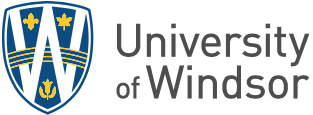 UWindsor physics professor Roman Maev is chair of the fifth annual Nano Ontario Conference, opening today at Caesars Windsor.
UWindsor physics professor Roman Maev is chair of the fifth annual Nano Ontario Conference, opening today at Caesars Windsor.
More than 150 key players in the field of nanotechnology will assemble today and Friday at Caesars Windsor for the fifth annual Nano Ontario Conference. Attendees will share results of their research and the latest developments in the application of nanotechnology in areas ranging from life sciences to aerospace.
Nanoscience and nanotechnology is the study and application of extremely small things and is used in such areas of research as chemistry, biology, physics, materials science and engineering.
The National Nanotechnology Initiative, a U.S. government research and development initiative, defines nanotechnology as science, engineering, and technology conducted at the nanoscale—about 1 to 100 nanometers. There are 25,400,000 nanometers in an inch, and a sheet of newspaper is about 100,000 nanometers thick.
Research conducted on a nano scale has shown results that could lead to such improvements as better batteries that are smaller and have longer life; improved solar cells that allow the harvest of solar energy in a more efficient way; and better computers that are cheaper, faster and have a smaller environmental impact. In the healthcare sector, nanotechnology is being used in novel drug delivery methods and to improve diagnostic tools.
The conference is organized by the University of Windsor and the Institute for Diagnostic Imaging Research (IDIR), the forefront of nanotechnology with research projects that promise to have significant impact on manufacturing technologies and healthcare sectors. One project that is nearing completion and being tested in the real world is a bioactive coating for medical titanium implants. This coating is expected to make the implants stronger, more resistant to wear and corrosion and more biocompatible with the human body.
